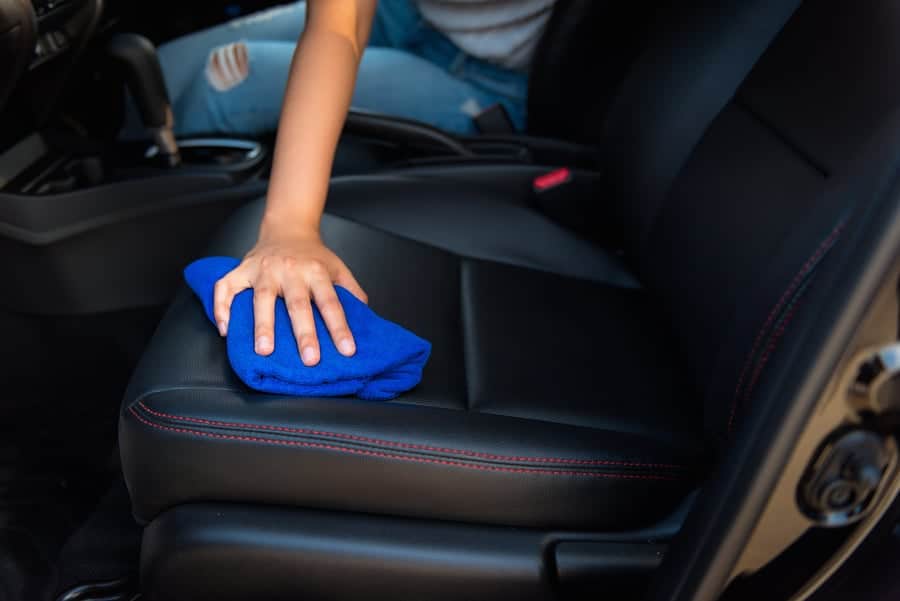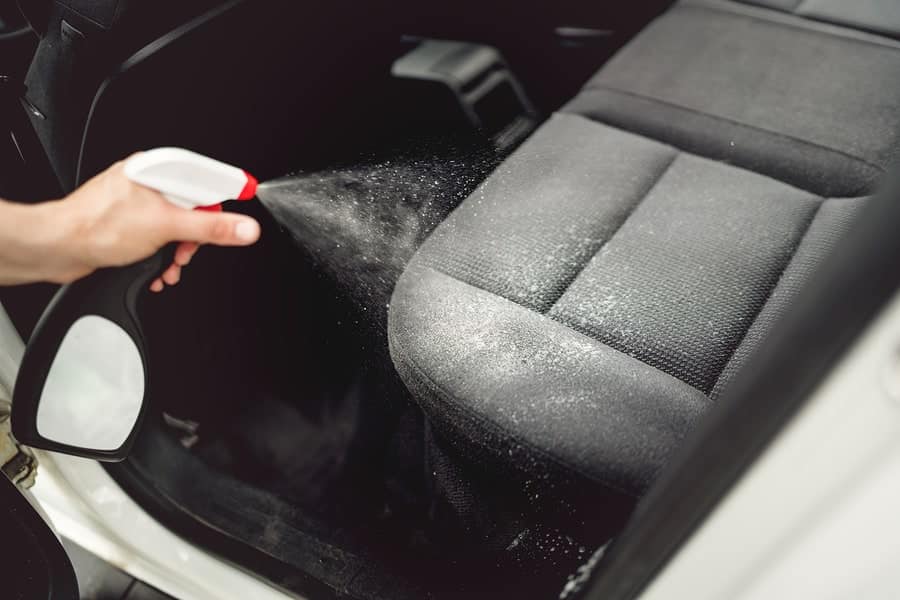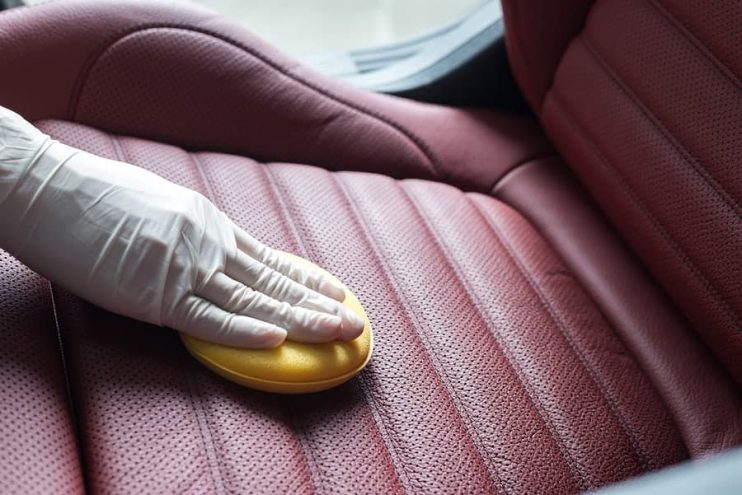
Regular cleaning can ensure that your car seats keep their good looks. This practice prevents stains from becoming permanent fixtures in your car and prolongs the process of discolouring and fading. Additionally a little wear and tear always looks worse when the rest of your car’s interior is unclean.
A strong cleaning schedule can also reduce those awful in-car odours and a well-kept car will help you fetch a higher price at resell. And if you’ve got little ones in your family then getting rid of the dirt and nasties around the back seat stops the risk of choking hazards and prevents illness from any bacteria that have been lingering about.
So what’s the best way of cleaning your car seats? In this article we give you some classic pointers, helping you establish an easy system to blitz the dirt.
Table of contents:
- Before You Start
- Cloth Seats
- Leather and Faux Leather Seats
- Keeping Your Seats Cleaner for Longer
- And Finally
Before You Start
As a rule of thumb we would always recommend that you test any new cleaning product that you haven’t used before on a small inconspicuous area of fabric in case it creates staining or damage. Nothing worse than a big discolouration in the middle of your seats.
Next, when you hoover or brush debris away be careful to use a lighter touch so you’re not actually pushing the dirt into the fabric and body of the seats. Pet hairs can also be challenging and you may want to purchase a pet hair brush to get them off your seats.
Cloth Seats

Method One:
- After checking the manufacturer’s instructions, take a bottle of upholstery cleaner or shampoo and spray one part of the seat.
- When the cleaning product has been left to do its magic for a couple of minutes, take a clean microfiber cloth and using slow circular motions gently clean the damp area, taking care to dry the seat as you go.
Method Two:
- Save a bit of cash by making your own solution. Add a small amount of laundry detergent to a bucket of hot water and rub the seats using a soft sponge.
- You’ll want to completely soak the sponge in the hot water bucket and then using big strokes, scrub each individual seat. Be careful to squeeze out the sponge as excess liquid can seep into the body of your seat. You’re only cleaning the covers, remember.
- When you’re completely satisfied that your seats are clean, next dip a tea-towel or bath-towel into a bucket of cold water. Use this to remove the remaining excess of dirt and detergent from the seats.
- With especially dirty seats, for instance if you have purchased a second hand vehicle that you want to spruce up, repeat the process several times for the best result.
And Our Additional Tips:
- Concentrate on small areas at one time, ensuring that you don’t allow the product to dry out and that you don’t miss any of the seat, before moving onto the next area.
- Try to achieve an even spread of upholstery cleaner or shampoo as this will help you avoid water stains, and remember that you’re only trying to make the seat damp – not soaking wet.
- You are best cleaning your seat on a good day in the spring, summer and early autumn months. The warm air will aid the drying process and save you from having to wait in order to avoid driving round on still damp seats.
Leather and Faux Leather Seats

Remember to always look at the instructions and check the type of upholstery cleaner you’re using. Ensure that you’re using a specialist product, which may be a cream rather than a spray, shampoo or conventional laundry detergent.
Method
- Whilst leather seats are not as absorbent as cloth seats, they are still susceptible to abrasions. Take care with the brush or hoover not to cause damage to the seats.
- First vacuum or brush the seats to remove most of the surface dirt, next you’ll want to apply small amounts of car upholstery cleaner, being sure to follow the instructions.
- Use a clean, moist chamois cloth taking special care to ensure that the cleaning product is entirely removed from the seat.
- Finally allow the warm air to naturally dry the seats out. And if you do see any soap spots or stains that have been left behind, simply wipe again with your cloth.
Keeping Your Seats Cleaner for Longer
There are several products that you can purchase to protect your cloth seats, forming a barrier that wards off dirt and splash. This not only means that you won’t have to clean your seats as often, but they’ll also be easier to clean.
With leather there are many conditioning products that ensure your seats are always supple and shining. By replenishing the natural oils in your seats you can prevent the dreaded cracking and stop the surface drying out. As we have advised throughout, make sure that these products are right for you, by checking manufacturers’ guidelines online or at the shop before you part with your cash.
And Finally
Car upholstery cleaning is not difficult, especially now you’re armed with our tips. Regular maintenance is the key. If you choose to adopt a regular schedule of cleaning you will actually find that you’re working less than doing one big clean every year.
Passengers appreciate a cleaner car, and there’s nothing better than taking a little bit of pride in your ride.












.png)